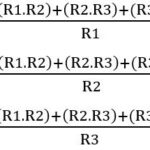In 5G (Fifth Generation) Wireless Communication, A DCI (Downlink Control Information) is a crucial element that facilitates the efficient management and control of downlink resources in the radio interface. DCI PLAYS A PIVOTAL ROLE IN ORCHESTRATING COMMUNICATION BETWEN THE NETWORK INFRASTRUTURE, PARQULARLY THE BASE STATION (GNB – Next -Generation NODEB), and the User Devices, ENSURING Optimal Utilization of the DownLink Channel for Data Transmission. Here's a detailed explanation of what a dci is and its significance in 5g networks:
1. Downlink Control Information (DCI) Defined:
- Control Information for DownLink Communication: DCI is a set of control messages transmitted by the gnb to use Devices (UES) in the DownLink Direction. These messages Carry Essential Instructions and Information related to the Management and Scheduling of Downlink Resources, Such as Assiging Time-Frequency Resources, Modulation and Coding Schemes, and Other Parameters.
2. DCI Formats:
- Multiple formats: dci messages are transmitted in various formats, each serving a specific purposes. The different formats accommodates various requirements, include resource allowance, beamforming, scheduling, and more.
- Adaptive Structure: The Adaptive Structure of DCI Allows It To Efficiently Convey Information Based On the Specific Needs of the Communication Scenario and the Capabilities of the User Devices.
3. Carried by DCI information:
- Resource Allocation: DCI CARRIES INFORMATION Watch the Allocation of Resources in the Downlink, specificing the time and frequency resources assigned to each ue for data transmission.
- Modulation and Coding Schemes: Details about the modulation and Coding Schemes to be used for data transmission are conveyed through dci. This ensures that ues can appropriatly configure their receipivers for optimal signal reception.
- BeamForming Instructions: In Scenarios Involving Beamforming, DCI May Provide Instructions On the Beamforming Configuration To Improve The Spatial Efficient of Communication.
- SCHEDULING commands: DCI include SCHEDULING commands that instruct ues when to transmit or receive data, contributing to efficient resource utilization.
4. Dynamic Nature of DCI:
- Dynamic Resource Allocation: One of the Key Features of DCI is its Dynamic Nature. It allows for real-time adaptation of Resource Allocation Based on Changing Network Conditions, User demands, and the Quality of the Wireless Channel.
- Dynamic Scheduling: DCI Enable Dynamic Scheduling, ENSURING THAT The Network can respond promptly to varying traffe patterns and service requirements.
5. DCI Procedure Transmission:
- Common and Ue-Specific DCI: DCI Introductive Transmission Both Common DCI, which is applicable to multiple ues, and ue-special dci, which is tailored to individual ues. This distinction Allows for Efficient Communication in various Network Scenarios.
- Timing transmission: DCI is transmitted During specific Time Slots Within the Radio Frame, Aligning with the Scheduled Transmission Opportunities for Downlink Control Information.
6. DCI and multiple antenna Systems:
- Massive Mimo and Beamforming: in Systems Employing Massive Mimo (Multiple input multiple output) and beamforming technologies, DCI Plays a Critical Role in Conveying Beamforming Vectors and Associated Information to Ues, Optimizing Spatial Communication.
- Spatial Multiplexing: DCI Helps in the Spatial Multiplexing of Data Streams, Enabling simultaneous communication with multiple Ues Using the same time-frequency Resources.
7. Significance of DCI in 5G:
- Efficient Spectrum Utilization: DCI Contributes to the Efficient Utilization of the Scarce Radio Spectrum by Dynamicalely Allocating Resources Based on the Real-Time Needs of the Network.
- Enhanced throughput: by Providing Instructions for modulation, Coding, and Scheduling, DCI Ensures that ues can maximize their throughput, leading to improved data rates and overall network performance.
- LateNcy Reduction: DCI's Dynamic Nature and Ability to Convey Real-Time Contribute to Reducing Communication Latency, Making It Well-Suite for Applications With Stringent LateNcy Requirements, Such AS Ultra-Reliable Low-Latency Communications (URLLC).
- Support for various services: DCI is designed to support A Wide Range of Services, Including Enhanced Mobile Broadband (EMBB), Massive Machine Type Communications (MMTC), and Urllc, Reflecting the various requirements of 5G use boxes.
8. DCI Formats and 3GPP Standards:
- 3GPP Standardization: The DCI Formats Are Defined and Standardized by the 3rd Generation Partnership Project (3GPP), Which Establishes the Technical Specifications for Cellular Communication Systems, Including 5G.
- Release Enhancements: AS 5G Networks Evolve, New Releases and Enhancements To The 3GPP Standards May Introduce DCI Formats, Features, and Improvements to Address Emerging Challenges and Support New Capabilities.
9. Interactions with Other Network Elements:
- Connection with Gnb and Core Network: DCI Interacts Closely with the GNB and Core Network Elements, ENSURING THAT THE DOWNLink Communication is well-coordinated and aligned with the overall network strategy.
- Harmonization with Upper Layers: DCI Aligns with Higher-Layer Protocols and signaling to Ensure Seamless Communication Between the Control and Data Planes of the Network.
10. SECURITY Considerations:
- Secure Transmission: Given the Critical Role of DCI in Managing Downlink Resources, Security Mechanisms are implemented to ensure the integrity and confidentiality of the transmitted control information.
- Authentication and Encryption: DCI Messages May be authenticated and Encrypted to Prevent unauthorized Access or Tampering, Safeguarding the Reliabibility and Security of the Communication.
In Summary, Downlink Control Information (DCI) in 5g is a set of control messages that play a vital role in orchestracting the downnink communication between the network infrastructure and user devices. It ensures the efficient allocation of resources, Dynamic Scheduling supports, and contributors to the overall performance, throughput, and latency characteristics of 5g networks. The Dynamic and Adaptive Nature of DCI Makes it a key enabler for various services and applications in the 5g ecosystem.
